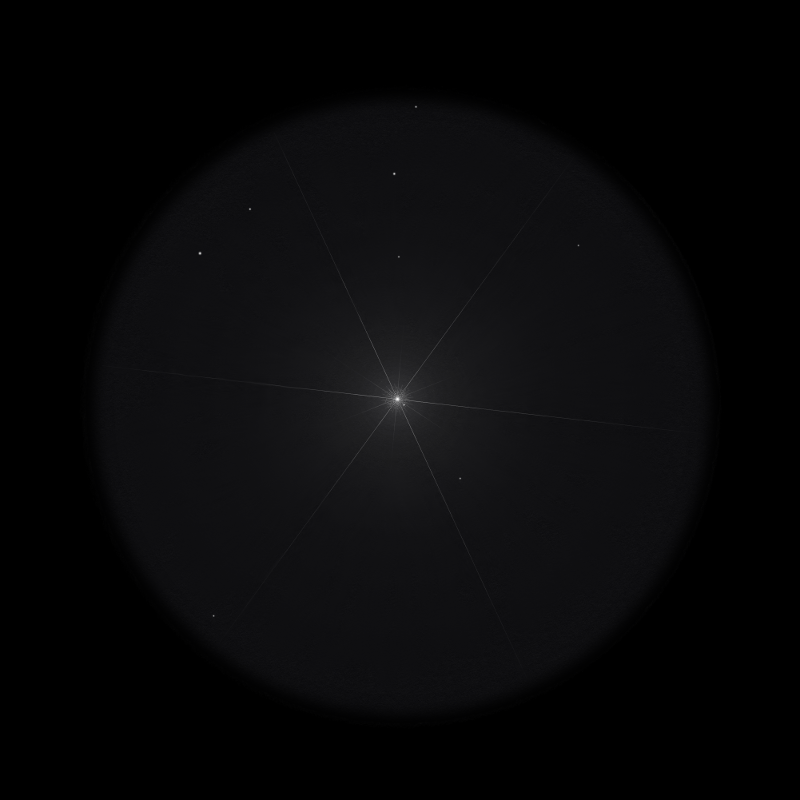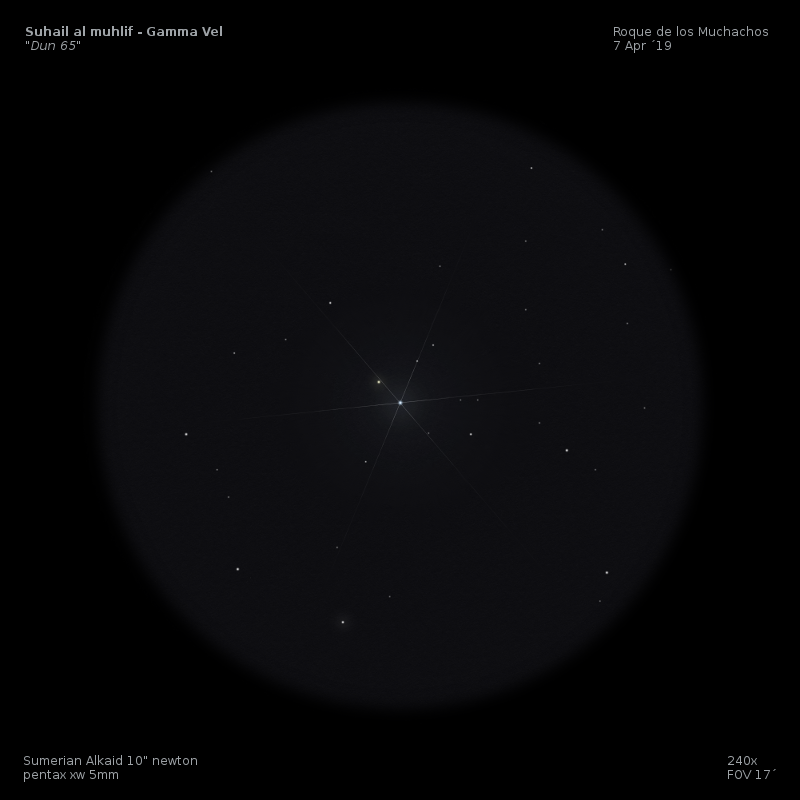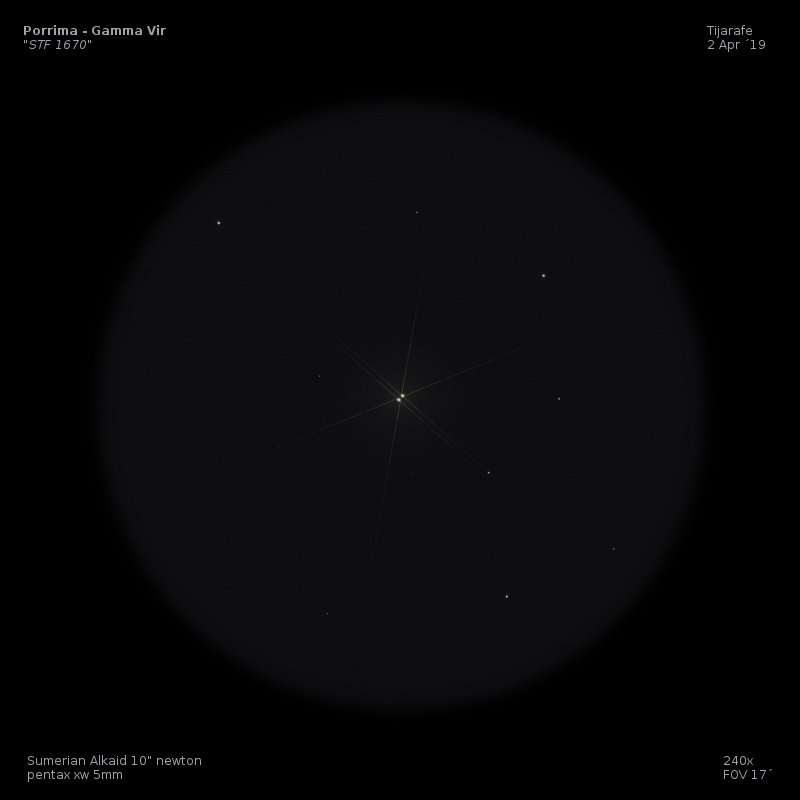Sketching some double stars under the pristine sky of La Palma
I have just returned from a week of observing on the lovely island of La Palma (Spain). Mainly for deep sky, but since the seeing on the top of mountain is well known for its quality, I could not resist to observe at least SOME double stars as well . Here’s my catch.
First one up was Porrima on the very first day I arrived. The observation was done in the garden next to the house. The seeing here is less (but still adequate) and the darkness still reaches a comfortable 21.6 mpsas. Porrima was easily split, with both stars (evenly) bright. The colors were perceived as white, although the A component may have appeared a bit yellowish.
On top of the world
Four days later I made the trip to the top of the Roque de los Muchachos at 2400+ mtrs. The wind had calmed a bit and there was no risk of high clouds. I set up my telescope with perfect view on the southern horizon. The seeing was very good and darkness reached 21.8 mpsas.

Still in twilight I started observing Sirius and was hoping to spot the pup as well. I was not disappointed… Sirius was a marvellous sight, not at all the same as I’m used to viewing it in my home country. A beautiful, white light accompanied by a very tiny speck of light on the east side. Much weaker than I expected, but continuously visible.

The next day I went to the top again for an allnighter. Some double stars were again on the observation list. Fortunately, the sky/weather conditions were a copy of the previous day. I first looked at Gamma Velorum, selected not because it’s tough, but for the sheer beauty of it (pls forgive me). The main component is a very bright blue-white (Wolf–Rayet) star. Very neat, even at low altitude. It’s accompanied by a white/light-yellow star some 2.4 mag dimmer. A lot more stars were visible in the same field, enhancing the beauty even more.

Later that night I observed Izar, which is a gorgeous double star. I used a higher magnification, which created a bit more “noise”, but the image was improved as a whole. Izar is a very bright yellow/golden star, while the companion is quite a bit dimmer (but still bright) and shows a pale blue color. The two were split comfortably and it was by far the best view I ever had on this pair.


